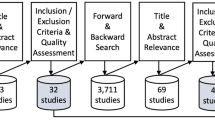Abstract
The main objective of this paper is to structure a real world investment problem in the publishing sector as a multicriteria decision problem in order to support a large Greek publishing company in making its specific strategic decisions. As a first step of the proposed approach a set of twelve publishing products in the Greek market is identified. Afterwards the distinct set of incremental impacts as tangible results of these actions is determined by taking advantage of the system’s competitiveness, effectiveness and flexibility. Then a consistent family of nine criteria reflecting the company strategy is structured. Finally, the paper outlines the implementation of the ELECTRE II multicriteria method which is adapted to true evaluation criteria so as to rank order the strategic actions and to provide an adequate and efficient decision support.





Similar content being viewed by others
References
Abgueguen R (1971) La sélection des supports de presse. Robert Laffont, Paris
Alexopoulos S, Siskos Y, Tsotsolas N (2007) Planning of a reader-oriented strategy for a publishing company: a case study. J Multi Criteria Decis Anal 14(1–3):89–101
Belton V, Stewart T (2002) Multiple criteria decision analysis: an integrated approach. Kluwer Academic Publishers, Dordrecht
Christensen CM (1997) The innovator’s dilemma-when new technologies cause great firms to fail. HBS Press, Boston
Christensen CM (2003) The innovator’s solution-creating and sustaining successful growth. HBS Press, Boston
David FR (2009) Strategic management: concepts and cases, 12th edn. Prentice Hall, Upper Saddle River
Eden C, Ackermann F (1998) Making strategy: the journey of strategic management. Sage, Beverly Hills
European Commission Report (2002) Market definition in the media sector. Available at http://www.ec.europa.eu/competition/publications/studies/european_economics.pdf
Fidler R (1997) Mediamorphosis: understanding the new media. Pine Forge Press, NY
Figueira J, Roy B (2002) Determining the weights of criteria in the ELECTRE type methods with a revised Simos’ procedure. Eur J Oper Res 139:317–326
Figueira J, Greco S, Ehrgott M (2005a) State-of-art of multiple criteria decision analysis. Kluwer Academic Publishers, Dordrecht
Figueira J, Mousseau V, Roy B (2005b) ELECTRE methods. In: Figueira J, Greco S, Ehrgott M (eds) Multiple criteria decision analysis: state of the art surveys. int. series in operations research and management science, vol 78. Springer, New York, pp 133–172
Growing Audience Seminar (2006) iTunes MP3 Podcast (June 2006), Newspaper Association of America, Arlington
Hodgkinson GP, Bown NJ, Maule AJ, Glaister KW, Pearman AD (1999) Breaking the frame: an analysis of strategic cognition and decision making under uncertainty. Strateg Manag J 20:977–985
Maystre L, Pictet L, Simos J (1994) Méthodes Multicritères ELECTRE. Presses Polytechniques et Universitaires Romandes, Lausanne
Montibeller G, Franco LA (2010a) Raising the bar: strategic multi-criteria decision analysis, to appear in J Operat Res Soc (Working Paper: https://www.lse.ac.uk/collections/operationalResearch/pdf/WP_LSEOR%2009-110_Montibeller_and_Franco.pdf)
Montibeller G, Franco LA (2010b) Multi-criteria decision analysis for strategic decision making. In: Zopounidis C, Pardalos P (eds) Handbook of multicriteria analysis. Springer, New York, pp 25–48
Newspaper Next (N2): The Transformation Project (2006) American Press Institute, Virginia
Newspaper Next 2.0: Making the Leap beyond Newspaper Companies (2008) American Press Institute, Virginia
Richard J-L (1981) Aide à la Décision Stratégique en PME. In: Jacquet-Lagrèze E, et Siskos J (eds) Méthode de Décision Multicritère. Hommes et Techniques, 1983, pp 119–142
Roy B (1985) Méthodologie multicritère d’Aide à la décision. Economica, Paris
Roy B, Bouyssou D (1993) Aide multicritère à la décision: méthodes et cas. Economica, Paris
Siskos Y (2008) Decision models. New Technologies Publications, Athens
Sorensen KA, Mortelmans J, Baby V, Opstrup N (2007) The content ecosystem-A framework for analysis. Scandinavian International Management Institute (SIMI)
World Association of Newspapers (2006–2009) Newsletters No. 33 (Aug 2006)–No. 41 (Mar. 2009)
Zopounidis C, Pardalos PM (2010) Handbook of multicriteria analysis. Springer, New York
Acknowledgments
The authors are willing to thank three anonymous referees for their constructive and helpful comments on a previous version of this paper.
Author information
Authors and Affiliations
Corresponding author
Appendix: the ELECTRE II method
Appendix: the ELECTRE II method
1.1 Building two outranking relations
The method ELECTRE II was initially presented by Roy and Bertier (see Roy and Bouyssou 1993; Figueira et al. 2005a; Siskos 2008). There are two embedded outranking relations to model the decision maker’s global preference: a strong outranking relation followed by a weak outranking relation. Both the strong and weak relations are built thanks to the definition of two concordance levels, \( s^{1} > s^{2} ,\;{\text{where}}\;s^{1} ,s^{2} \; \in \;[0.5,\;1 - \min_{j \in F} p_{j} ] \). For each criterion are defined two veto thresholds \( v_{j}^{i} ,\;\forall \;i = 1,2\;{\text{and}}\;j = 1,2, \ldots ,n \) where \( v_{j}^{2} \ge v_{j}^{1} \). The first one \( v_{j}^{1} \) (narrow) is for the strong outranking relation and the second one \( v_{j}^{2} \) (greater than or equal to \( v_{j}^{1} \)) for the weak outranking relation.
The concordance and discordance conditions with the assertion “a outranks b” can be defined as follows:
1.2 The ranking algorithm
Below we present the four steps of the ranking algorithm (Figueira et al. 2005b; Siskos 2008):
-
1.
Partitioning the set A. First, let us consider the relation S 1 over A. This relation may define on A one or several cycles. If all the actions belonging to each maximal cycle are grouped together into a single class, a partition on A will be obtained. Let \( \overline{A} \) denote this partition. When each class of \( \overline{A} \) is not singleton, the actions belonging to that class will be considered as one. For the purpose of comparison between elements of \( \overline{A} \) a preference relation \( \succ \) will be used.
-
2.
Building a complete pre-order Z 1 on \( \overline{A} \). After obtaining \( \overline{A} \), the procedure identifies a subset B 1 of classes of \( \overline{A} \) following the rule “no other is preferred to them” according to the relation \( \succ \). After removing B 1 from \( \overline{A} \) and applying the same rule to \( \overline{A} \backslash B^{1} \), a subset \( B^{2} \) will be found. The procedure iterates in the same way till define the final partition on \( \overline{A} ,\;\{ B^{1} ,B^{2} , \ldots \} \).
Now, on the basis of S 1, we use the concordance level S 2 to clear outranking of the actions inside the classes.
-
3.
Determining a complete pre-order Z 2 on \( \overline{A} \). The procedure to obtain this pre-order is quite similar to the above one; only two modifications are needed:
-
a.
Apply the rule “they are not preferred to any other” instead of “no other is preferred to them”; let \( \{ B^{1'} ,B^{2'} , \ldots \} \) denote the partition thus obtained;
-
b.
Define the rough version of the complete pre-order Z 2 by putting it in the queue of this pre-order, and in an ex equo position all classes of B 1’, then those of B 2’ and so forth.
-
a.
-
4.
Defining the partial pre-order Z. The partial pre-order Z is an intersection of Z 1 and Z 2, \( Z = Z_{1} \cap Z_{2} \), and it is defined in the following way:
Rights and permissions
About this article
Cite this article
Alexopoulos, S., Siskos, Y., Tsotsolas, N. et al. Evaluating strategic actions for a Greek publishing company. Oper Res Int J 12, 253–269 (2012). https://doi.org/10.1007/s12351-010-0092-0
Received:
Revised:
Accepted:
Published:
Issue Date:
DOI: https://doi.org/10.1007/s12351-010-0092-0




